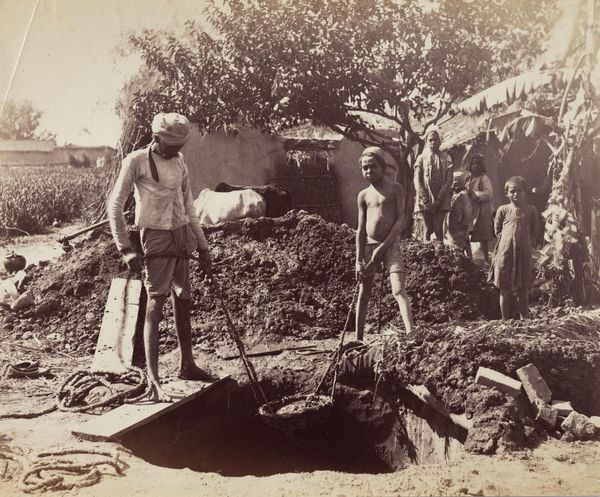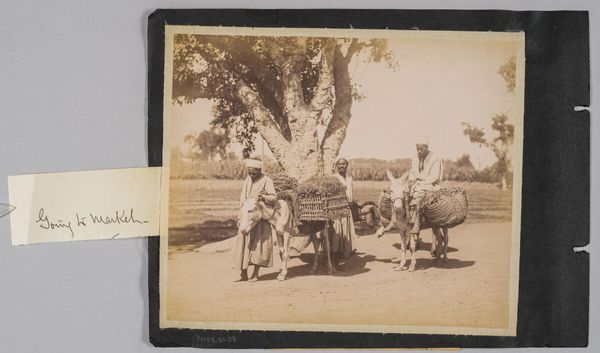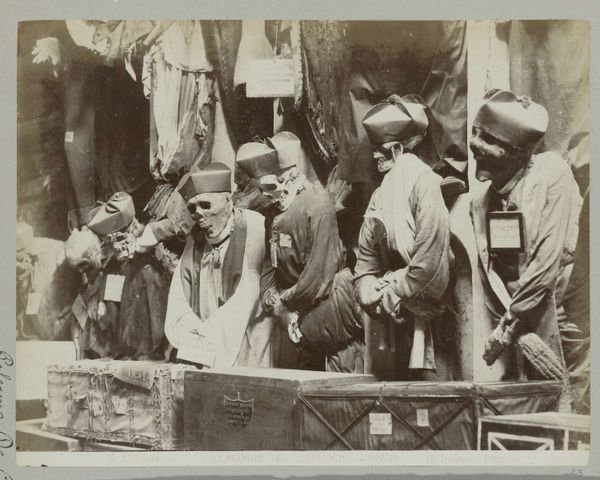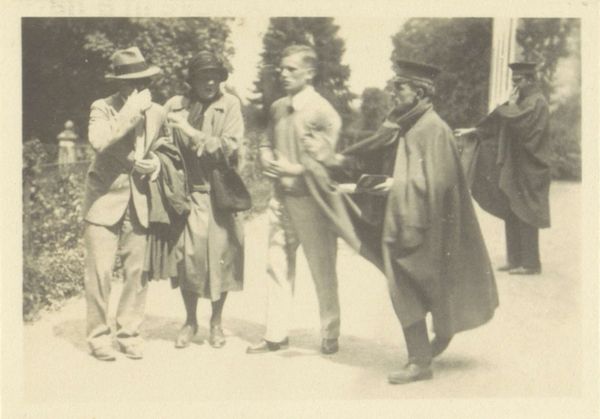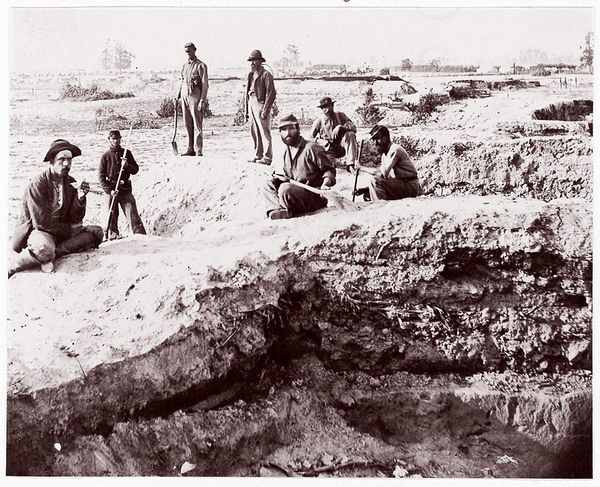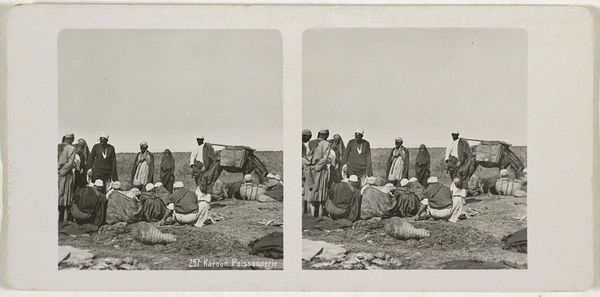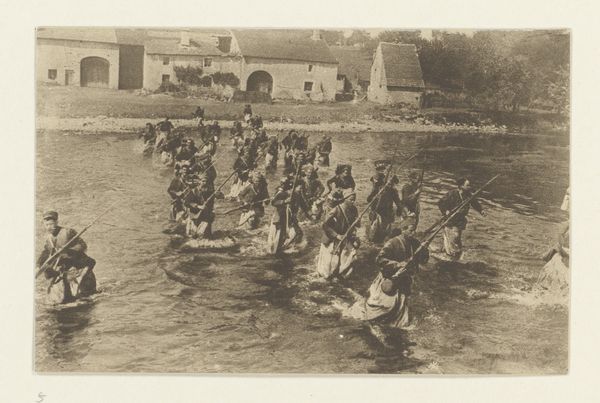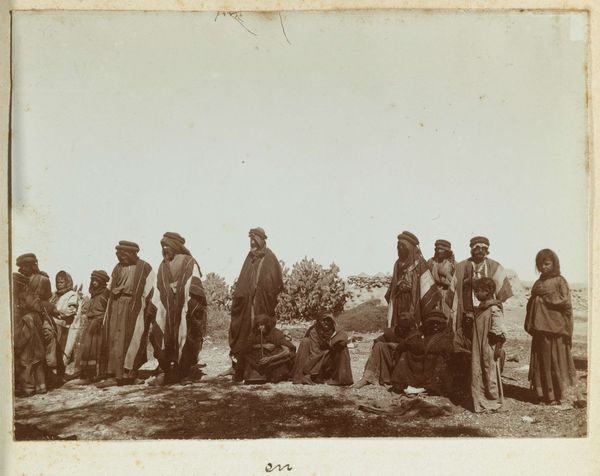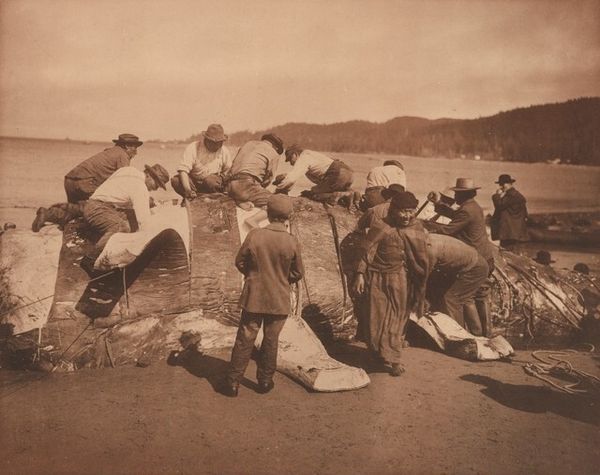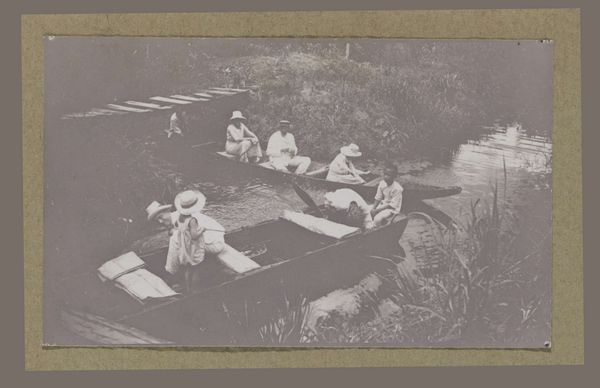
Vier mannen staand in een rivier met draagzakken van dierenhuid op de rug 1870 - 1910
0:00
0:00
cgzangaki
Rijksmuseum
photography, albumen-print
#
portrait
#
landscape
#
street-photography
#
photography
#
personal sketchbook
#
group-portraits
#
orientalism
#
albumen-print
Dimensions: height 278 mm, width 350 mm
Copyright: Rijks Museum: Open Domain
C. and G. Zangaki made this albumen print of four men in a river, sometime in the late nineteenth century. This staged scene of labour in Egypt raises questions about the role of photography in colonial contexts. Consider how the image might participate in the exoticization of non-Western cultures. The men, burdened with animal-skin bags, become symbols of manual labour, which fit neatly into colonial narratives of progress and development. During this period, photographic studios like Zangaki flourished by catering to European tourists eager to consume images of the ‘Orient.’ These photographs often reinforced existing power dynamics, portraying Egyptians in ways that suited European expectations and fantasies. To fully understand this photograph, we need to delve into the archives. Research into colonial tourism, the history of photography in Egypt, and the socio-economic conditions of the time can shed light on its complex meanings. Art history reminds us that images are never neutral.
Comments
No comments
Be the first to comment and join the conversation on the ultimate creative platform.
